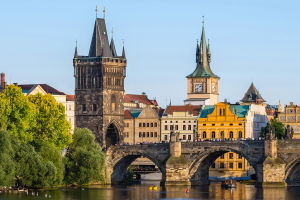When you think of Kyoto, places like Kiyomizu-dera or Fushimi Inari probably come to mind. They're beautiful, yes, but also crowded and heavily photographed.
But what if I told you there's another Kyoto—one tucked between mossy forest trails and narrow lanes, where ancient temples whisper stories no travel brochure ever tells?
This is a journey not through major landmarks, but through time itself. Through silence. Through places where the wind, not a tour guide, tells you what matters.
1. Honen-in: A Temple That Lives in Stillness
Tucked away behind the Philosopher's Path, Honen-in feels like a secret even locals don't mention often. There's no large entrance sign. No long lines. Just a thatched gate and a curved stone path leading into a world that feels like it belongs to another century.
As you pass through the gate, you'll find two raised sand mounds at the entrance, carefully combed by monks every morning. They symbolize purification—a ritual you perform just by walking between them. In autumn, fallen maple leaves gently cover the stone steps, creating a carpet of red and gold. It's peaceful in a way that makes you feel like even your thoughts should lower their voices.
🎫 Ticket Price: Free
🕒 Opening Hours: 6:00–16:00
📌 Note: The main hall is not open to the public year-round. Entry to the grounds is always free.
2. Gio-ji: The Temple of Moss and Memories
Just a short walk from the popular Sagano area, Gio-ji is small in size but enormous in atmosphere. Its main hall is modest, with a thatched roof and wooden porch. But the true magic lies in its moss garden—lush, vibrant, and untouched.
It almost feels like the moss is alive, breathing under your feet. In spring, the scene is delicate and green. In autumn, golden leaves float down like confetti from the past. If you come during the rain, which happens often in Kyoto, the water beads on the moss sparkle like tiny stars.
• No crowds, perfect for quiet moments
• Immersive nature—moss, maple, and silence
• Seasonal changes that completely transform the temple
🎫 Ticket Price: 300 yen (adults) / Free for children
🕒 Opening Hours: 9:00–17:00 (last entry at 16:30)
3. Otagi Nenbutsu-ji: Laughter Among the Stone
Hidden deeper in Arashiyama's northern hills, Otagi Nenbutsu-ji is not easy to find, and that's part of its charm. Most tourists never make it here—but those who do are rewarded with something utterly unique: over 1,200 stone statues of "rakan" (disciples of the Buddha), each with its own quirky expression.
Some look serene, others goofy—one even seems to be playing an instrument. It's hard not to smile. The temple doesn't demand reverence through grandeur; it wins you over with personality and playfulness.
Spirituality doesn't always have to be serious. Sometimes it looks like stone monks giggling in the rain.
🎫 Ticket Price: 300 yen (adults) / Free for children
🕒 Opening Hours: 8:00–17:00
What You Discover When You Get Lost
One thing you'll notice with these hidden temples: getting there is never straightforward. GPS might lead you close, but at some point, you'll have to rely on signs in kanji, intuition, or a helpful old man walking his dog.
And in those detours, the real travel memories are born.
1. You might stumble upon a teahouse where an old woman serves matcha the way her grandmother taught her.
2. You might rest on a mossy stone wall and hear wind chimes in the distance.
3. You might get caught in the rain and take shelter under the eaves of an abandoned shrine.
These moments never appear in guidebooks. But they stay with you long after the trip ends.
Why These Temples Matter
In an age of rapid tourism and TikTok-famous landmarks, these quiet temples face a new kind of threat—being forgotten. Many are maintained by a single monk or funded through seasonal donations. They don't chase popularity. They simply exist, humbly, waiting for someone to find them.
By visiting these temples, even silently, we participate in something larger than ourselves. We help preserve a rhythm of life that resists the speed of the modern world.
Will You Walk the Quiet Path?
So here's the real question: do you want a trip you can post in five seconds, or a memory that will stay with you for five decades?
Kyoto's hidden temples aren't on most "Top 10" lists. You won't find food stalls or flashy lights nearby. But you will find something else—a whisper of time, a sense of calm, and maybe even a part of yourself you didn't know you were looking for.
Next time you visit Kyoto, skip one tourist spot. Just one. And follow the quiet path instead. You might be surprised where it leads.


